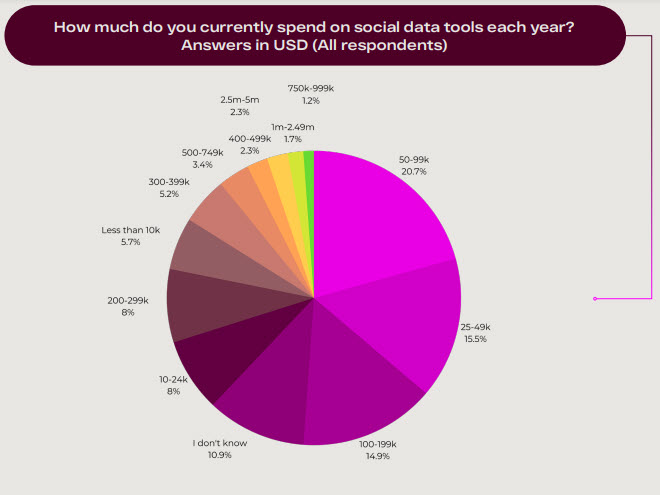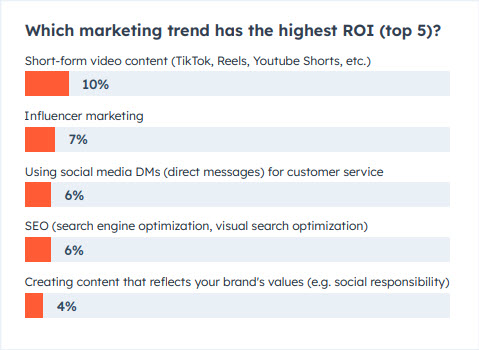Remember scrolling through social media just to kill time?
I do. And often, amid the memes and updates, I’d stumble upon interesting conversations.
That’s where our journey into the world of social listening begins.
💡 Read Social Listening Guide: Proven Hacks, Strategies, and Tools
Think of it not just as passive scrolling, but as a strategy to find leads using social interactions. Intriguing, isn’t it?
And here’s the best part:
You don’t need a tech background to get started.
In this guide, I’ll share five actionable methods to help you find leads using social listening.
Curious to learn more? Let’s get right to it!
The Power of Social Listening
Before we dive into the nitty-gritty, let’s pause for a moment. Why is social listening such a big deal?
Imagine having a superpower. One that lets you tune into conversations about your brand, products, and competitors. You’d be right in the heart of what your audience is thinking, feeling, and saying.
That’s social listening for you.
And it’s not just me seeing the potential.
According to The Social Intelligence Lab’s recent report, a significant 39.1% of respondents are making a hefty investment, spending more than $100k annually on social listening technology.

Social listening is not just about eavesdropping. It’s an avenue to engage, connect, and most importantly, find leads using social channels.
Armed with this knowledge, let’s embark on the journey to harness this power.
Finding Leads Using Social Listening: 5 Key Strategies
The realm of social media is vast, but with the right approach, every tweet, post, and comment can be a lead waiting to be discovered.
Below, I’ll guide you through five strategies to seamlessly turn social chatter into valuable leads.
1. Monitor Brand Mentions
Every time someone mentions your brand online, think of it as a ripple in the vast ocean of the digital world. Whether they’re praising your latest product or posing a critical question, it’s an opportunity knocking at your door.
First things first, you’ll want to set up alerts for your brand name, any key products, and even your CEO or other notable figures in your company.
These alerts act as your eyes and ears, ensuring you track all mentions and don’t miss any conversation around your brand.
You can easily set this up on Determ:
Now, what to do with these mentions?
Here are a few tips:
- Engage immediately: A quick response can make all the difference. If someone praises your product, a simple “Thank you” can foster goodwill. For criticisms, addressing issues promptly shows you care. These interactions build a positive brand image.
- Content opportunities: If a user discovers an innovative use for your product, you can use that for a potential blog post or video. Unsure of how to do this? Attrock’s guide on leveraging social listening for content marketing is a treasure trove of insights.
- Monitor and adapt: Keep track of these brand mentions. Are there recurrent themes or issues? Maybe there’s a product feature that’s gaining traction? Use this feedback loop to refine your offerings and marketing strategy.
In essence, brand monitoring isn’t just about keeping your ear to the ground. It’s about proactively diving into conversations, extracting value, and directing that momentum toward growth.
It’s a strategy that puts your brand right in the heart of the action, where real engagement happens.
2. Track Competitor Conversations
By monitoring the conversations around your competitors, you gain invaluable insights into what potential or existing customers desire, complain about, or wish were different.
You can use a platform like Determ to track your competitors’ mentions. Here’s a snapshot of Determ’s dashboard showing mentions of Lush Cosmetics, for example.
Here are some tips for monitoring your competitors’ mentions:
- Set up specific alerts: As you did for your brand, create alerts for your primary competitors. This will help you capture any mention, review, or discussion related to them.
- Identify gaps and opportunities: When people mention what they love about a competitor, take note. But more importantly, when they mention what they don’t love, jump on the opportunity.
- Engage tactfully: It’s a delicate balance, but when potential customers express dissatisfaction with a competitor, there’s an opening.
- Learn and innovate: Competitor mentions are a direct line to tracking market demand. Are people raving about a particular feature you lack? Maybe it’s time to consider an upgrade or an alternative offering.
In the end, competitive analysis provides actionable insights for business strategy, product development, and lead generation.
3. Discover Niche Influencers
HubSpot’s recent study uncovered that influencer marketing is one of the trends providing the 2nd highest ROI for marketers, outshining SEO.

With social listening, you can identify potential brand ambassadors in your industry before your competitors do.
So, what’s the game plan?
- Identify high-engagement posts: Search for posts within your industry that have high engagement. These posts often come from individuals who have a considerable following and whose opinions matter to their audience.
- Engage, don’t pitch: Start by genuinely engaging with their content. Like, comment, and share. Build a relationship before sending any brand-related pitch. A genuine comment goes a long way in making a lasting impression.
- Look for authenticity: A massive following doesn’t always translate to influence. Sometimes, a micro-influencer with a smaller but highly engaged audience can bring more value.
- Collaborate creatively: Once you’ve built a rapport, discuss collaboration. It could be a guest post on their blog, a co-hosted webinar on a video streaming platform, or even a product review.
Influencer collaboration through social listening isn’t just about finding someone with followers. It’s about finding the right influencer whose audience aligns with your target audience.
4. Leverage User-Generated Content (UGC)
User-Generated Content (UGC) is the digital equivalent of word-of-mouth marketing. It’s authentic, trusted, and often more relatable than brand-produced content.
And don’t take my word for it. Here’s proof that UGC works:
Through social listening, you can discover UGC that resonates with your audience, offering invaluable insights and potential leads.
Here’s how to harness this potential:
- Monitor brand mentions and hashtags: Stay alert to mentions of your brand and specific hashtags related to your products or campaigns. This will help you identify any user content celebrating or discussing your offerings.
- Engage with the creators: Once you spot a piece of UGC that aligns with your brand, take a moment to engage with the creator. You can easily outsource this task to social media virtual assistants if you’re busy.
- Create UGC campaigns: Encourage your audience to create content by launching UGC-centric campaigns. For example, you could host a photo contest or initiate a hashtag challenge, offering incentives for participation.
- Repurpose and share: After acquiring permission, repurpose UGC across your digital platforms. Have a blog? Share it there. And you can always harness a free blog maker if you have no blog set up.
Leveraging UGC is a tried and tested strategy that can drive engagement, create organic buzz, and steer potential leads right into your funnel.
Read 10 Must-Have Growth Hacking Tools in 2024
5. Identify Pain Points & Solutions
One of the key advantages of social listening is its ability to provide unfiltered feedback straight from your audience.
By tuning into social conversations, you can identify common problems, complaints, or questions related to your industry or product.
You’ll also get the opportunity to provide feedback and interact with customers.
So, how can you make the most of this?
- Manage customer services: Use the right customer service management software to provide instant customer service to your customers.
- Set up specific topics: Focus your social listening tools on specific keywords or phrases that indicate pain points. Words like “struggle”, “challenge”, or “problem” coupled with your product or service name can be revealing.
- Engage directly: When a user shares a challenge they’re facing, engage with them directly. Offering a solution or even just empathizing can convert a frustrated user into a loyal customer.
- Develop content around pain points: Once you’ve identified common challenges, create content that addresses them.
- Use feedback for product development: Address user pain points by refining your products or services. If interface complexities arise frequently, invest in usability testing to enhance user experience. It’s an immediate testament to your brand’s commitment to its users.
Remember, by addressing pain points head-on, you’re not just solving problems. You’re building trust and loyalty, crucial components in converting leads.
Start Getting Quality Leads Using Social Listening
Harnessing the power of social listening isn’t just about data collection.
It’s about genuine connections.
By applying the methods I’ve listed here you position your brand not only as a keen listener but as a responsive solution provider.
In the vast digital ocean, your audience is talking. You just need to listen in to the online conversations and find valuable leads.


